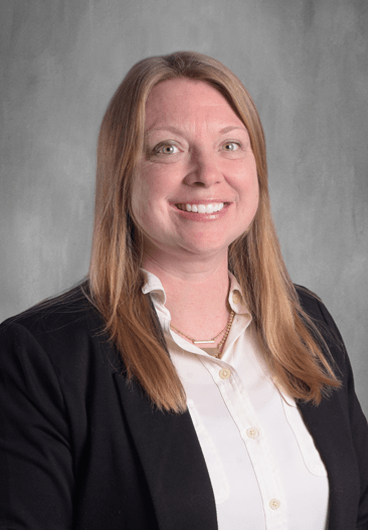
Megan Thompson
Thoroughgood Elementary School
Virginia Beach, Virginia
mmthomps@vbschools.com
Best Practices
1) Teacher and Staff Development: In the ever-evolving landscape of education, adapting and enhancing support systems to meet all students’ needs is essential. One of my significant accomplishments as an assistant principal is spearheading the relaunch of the Student Response Team (SRT) process at my school. This best practice uses a tiered system of support, a comprehensive framework designed to address the diverse academic and behavioral needs of the whole child. This endeavor involves strategic professional development for teachers, leveraging instructional coaches, implementing manageable structures, and encouraging family involvement, ultimately creating a holistic approach to student success.
Central to the success of relaunching the SRT process is providing targeted professional development for teachers. Teachers reported the framework that existed prior to the relaunch was overwhelming. I collaborated with our reading specialist, principal, and other instructional coaches to review the systems in place. Based on best practices and teacher feedback, we created a streamlined flowchart and outlined a system to support teachers and students. We organized workshops and training sessions to equip educators with the necessary skills and knowledge. These sessions not only familiarized teachers with the process and framework but also provided practical strategies to differentiate instruction, identify students’ needs, and use data-driven decision-making.
Since the initial relaunch almost two years ago, we have continued to refine the SRT process. Instructional coaches have played a pivotal role. Coaches serve as guides, mentors, and collaborators, working closely with teachers to tailor instructional strategies to individual student requirements. Through regular coaching cycles, feedback sessions, and collaborative planning, instructional coaches facilitate the seamless integration of progress monitoring into daily classroom practices. Their expertise not only builds teacher capacity but also directly impacts student outcomes by providing targeted support.
Monitoring student progress through measurable goals has been crucial to the success of relaunching the SRT process. Regular data reviews allow us to track the effectiveness of interventions, identify areas for improvement, and celebrate successes. This data-driven approach not only informs instructional practices but also demonstrates the tangible impact on student achievement. Curating and combining resources provided by our school division was another key aspect of relaunching SRT. By centralizing resources, we create a repository of tools, materials, and interventions that teachers can easily access and implement. This collaborative approach allows for the sharing of successful strategies and ensures consistency in the application of SRT across classrooms. This resource hub becomes a dynamic platform for continuous learning, enabling teachers to stay informed about the latest research, interventions, and best practices.
Encouraging family involvement is the final piece of the puzzle in our comprehensive approach to relaunching SRT. Recognizing that the partnership between school and home is critical for student success, we implement initiatives to engage families in the process. Regular communication and family support networks are established to provide parents with a deeper understanding of the process and empower them to support their children’s academic and behavioral growth at home. This collaborative effort creates a united front, reinforcing the importance of a holistic support system for students.
2) Whole Child Initiatives: In the realm of special education, best practices extend beyond traditional classroom settings, requiring a multifaceted approach to support students, teachers, and lead comprehensive programs. As an assistant principal, I have facilitated professional development focused on best practices, supported students as they return from restrictive placements, and led the largest Extended School Year (ESY) program in our school district.
High-quality professional development is at the heart of best practices in special education. Through a collaborative partnership with our special education coordinators, school-based instructional coaches, and our school administrators, we plan continuous collaboration and professional development sessions. We use data to determine focus areas and combine understanding psychological reports with current research focused on the science of learning and child development. We discuss pedagogy, instructional strategies, and appropriate student-centered goals.
Supporting students as they return from restrictive placements is a delicate process that demands a combination of empathy, planning, and collaboration among stakeholders. Recognizing the unique needs of each student, we use a student-centered approach, involving educators, families, and support staff in developing tailored transition plans. These plans focus not only on academic goals but also on fostering social and emotional well-being. Regular communication and collaboration with families play a pivotal role in this process, ensuring a seamless transition from restrictive placements back to a more inclusive educational environment.
One of the highlights of my tenure as an assistant principal has been leading the ESY program, a testament to our commitment to providing continuous and targeted support for students with special needs. Best practices for ESY involve a strategic blend of skill reinforcement and a focus on individualized goals. I have collaborated with a team of dedicated educators, psychologists, and support staff to design a program that not only prevents the regression but also fosters continued growth for students with special needs. The success of this program lies in its ability to provide a supportive, engaging environment, ensuring that students not only maintain but also progress in their growth during the summer months.
High-yield practices in special education support students, empower teachers, and are integral to the success of comprehensive programs. My journey as an assistant principal has been defined by a commitment to excellence in these areas. Through empathy, collaboration, and strategic planning, I aim to continue fostering an inclusive educational environment where every student can thrive and reach their full potential.


